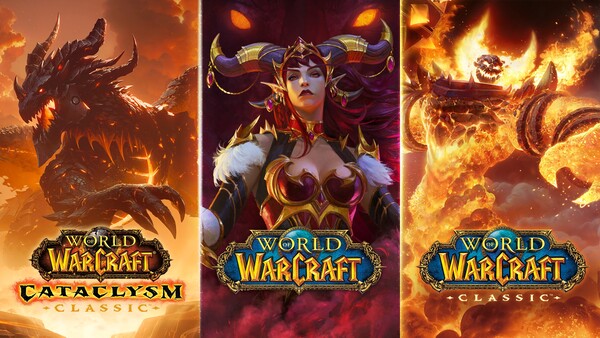Introduction
World of Warcraft (WoW), Blizzard Entertainment’s flagship MMORPG, has been a cornerstone of the gaming world since its launch in 2004. Over the years, WoW has introduced a wealth of content, from expansive new zones to complex raid mechanics. However, as the game has evolved, a significant issue has emerged: content overload and player burnout. With each expansion, the sheer volume of new content and the demands of endgame progression have led to increased player fatigue. In this article, we will explore the causes of burnout in WoW, its impact on the player base, and potential solutions to address this growing problem.

Version 1.0.0
The Expansion Cycle: A Double-Edged Sword
The release of each new WoW expansion brings excitement and a flood of new content. However, this cycle also contributes to player burnout due to the pressure to constantly consume new material.
H3: The Cycle of Content Creation
Every expansion introduces new dungeons, raids, zones, and systems, creating an ever-expanding world. While this content keeps the game fresh for a while, it also means that players must continually adapt to new mechanics and objectives. The pressure to stay current with new content can be overwhelming, particularly for players who engage in competitive or high-level play.
H4: The Impact of Frequent Updates
Blizzard’s approach to frequent updates and patches adds another layer of complexity. While regular updates are intended to keep the game dynamic and engaging, they also contribute to the sense of never-ending tasks. Players may feel the need to grind through new content quickly to stay ahead, leading to a cycle of continuous engagement that can quickly lead to burnout.
The Raid Race and Its Toll
Raiding has always been a central feature of WoW, but the intense competition and demands of high-level raiding can be a significant source of burnout.
H3: The Race to World First
High-level raiding, particularly the race to be the first guild to defeat a new raid boss, is a major event in the WoW community. This race often involves long hours of practice and coordination, pushing players to their limits. The intense focus required can lead to physical and mental exhaustion, even among the most dedicated players.
H4: The Long Road to Progression
For many players, the road to completing a raid is long and arduous. Guilds often spend weeks, if not months, working through complex encounters. The grind to gear up and prepare for these raids, combined with the pressure to perform at the highest level, can lead to significant burnout. Players may feel that the rewards are not worth the time and effort invested.
The Gear Grind: Endless Repetition
In WoW, gear progression is crucial, but the process of obtaining and upgrading gear can become repetitive and tiresome.
H3: The RNG Element
Gear acquisition in WoW often relies on random drops or rewards from loot tables. This randomness, combined with the need to farm specific dungeons or raids repeatedly, creates a grind that can feel endless. Players may spend hours running the same content in hopes of obtaining a specific piece of gear, only to be disappointed by another RNG-based outcome.
H4: The Pressure of Meta Compliance
As new content is introduced, certain gear and builds become more desirable due to changes in the game’s meta. This can force players to continually chase after the latest gear or optimizations, leading to a never-ending cycle of acquisition and refinement. The pressure to stay competitive can exacerbate feelings of burnout.
The Social Dynamics: Guilds and Community Expectations
Social dynamics within WoW guilds and the broader community can also contribute to player burnout.
H3: The Role of Guild Commitments
For many players, being part of a guild means adhering to specific schedules and expectations. This can include mandatory raid times, regular participation in events, and maintaining a high level of performance. The social pressure to meet these commitments can be a significant source of stress, leading to burnout among guild members.

H4: The Impact of Online Communities
WoW’s online communities, while vibrant and supportive, can also contribute to burnout. The constant comparisons to other players, whether through leaderboards, forums, or social media, can create a sense of inadequacy or pressure to keep up. This social pressure can make the game feel like a chore rather than a source of enjoyment.
The Effects of Burnout: Personal and Game-wide Implications
Burnout in WoW has broad implications, affecting not only individual players but also the game’s community as a whole.
H3: Personal Consequences
Players experiencing burnout may find themselves losing interest in the game, leading to periods of inactivity or even quitting altogether. The stress and exhaustion associated with burnout can impact other areas of a player’s life, including work and personal relationships. In severe cases, it can lead to feelings of frustration and disappointment with the game they once loved.
H4: Community and Developer Impact
Burnout also affects the broader WoW community. As players leave or become inactive, guilds may struggle to maintain their rosters, impacting the overall health of the game’s social structures. Developers are also affected, as the constant demand for new content and updates can be challenging to meet. This can lead to a cycle of dissatisfaction among players, further exacerbating the issue.
Potential Solutions: Addressing Burnout in WoW
While burnout is a complex issue, there are several strategies that Blizzard could implement to help mitigate its effects and improve player experience.
H3: Reducing the Grind
One approach is to reduce the grind associated with gear acquisition and progression. Implementing systems that offer more predictable rewards or providing alternative paths to obtaining high-quality gear could help alleviate some of the repetitive aspects of gameplay. Reducing reliance on RNG and offering more consistent progression could make the game more enjoyable for players.
H4: Balancing Content Updates
Another potential solution is to balance the frequency and intensity of content updates. While regular updates are important for keeping the game fresh, too many updates can contribute to burnout. Blizzard could consider a more measured approach to content release, allowing players to fully engage with and enjoy each update before introducing new material.
The Role of Player Agency: Empowering the Community
Empowering players to take control of their gaming experience can also help reduce burnout.
H3: Encouraging Flexible Playstyles
Allowing players to choose how they engage with the game, whether through casual play, solo content, or less competitive environments, can help reduce the pressure to keep up with high-level content. Providing more options for players to enjoy the game on their own terms can lead to a more balanced and satisfying experience.
H4: Supporting Mental Health
Addressing mental health and well-being is also crucial. Blizzard could implement features that promote healthy gaming habits, such as reminders to take breaks or tools to manage in-game time. Providing resources and support for players experiencing burnout could also help them navigate the challenges of high-intensity gaming.

Conclusion
Burnout in World of Warcraft is a significant issue driven by content overload, the demands of high-level play, and social pressures. As the game continues to evolve, it is essential for Blizzard Entertainment to address these challenges and find ways to make the gaming experience more enjoyable and sustainable for all players. By reducing repetitive elements, balancing content updates, and supporting player well-being, the company can help alleviate burnout and ensure that WoW remains a vibrant and engaging experience for years to come.


